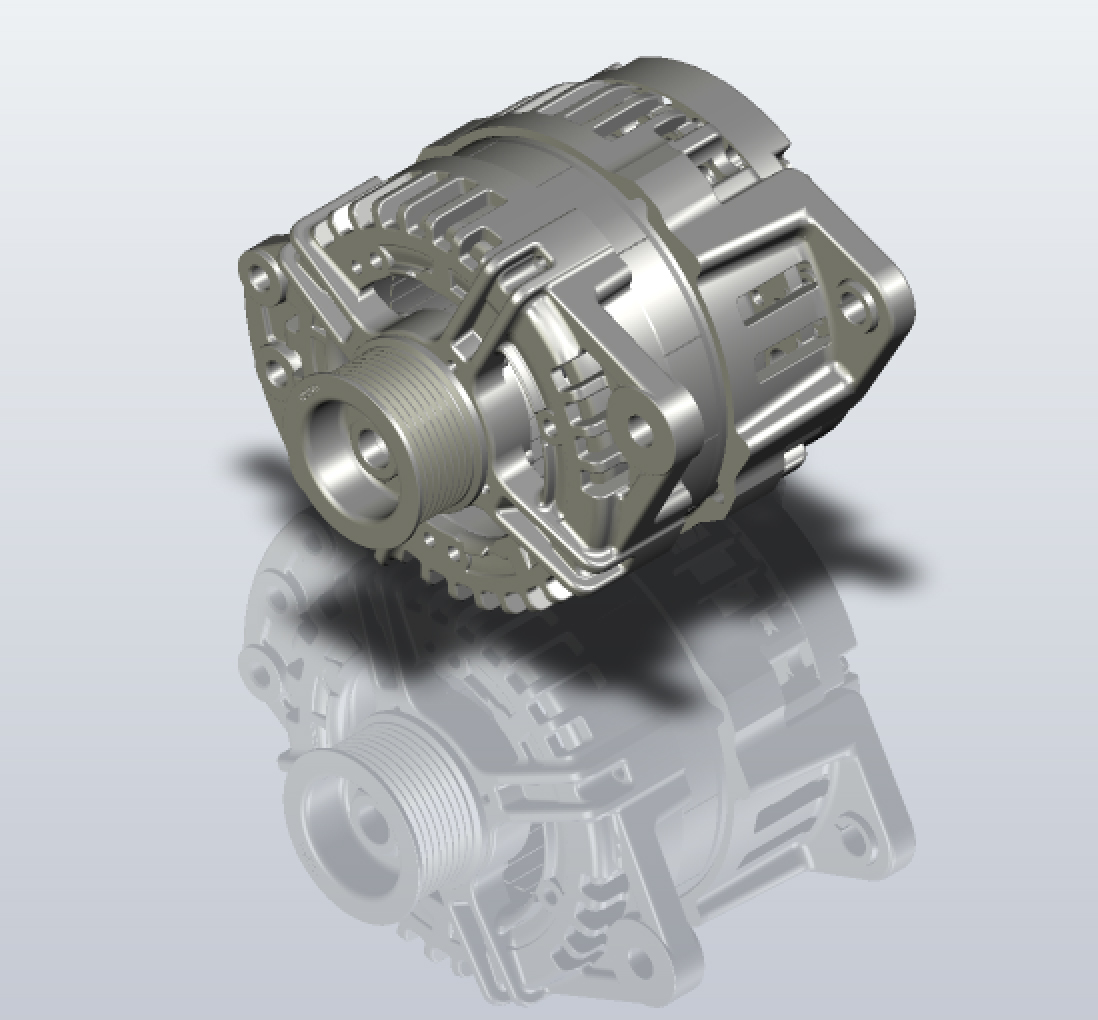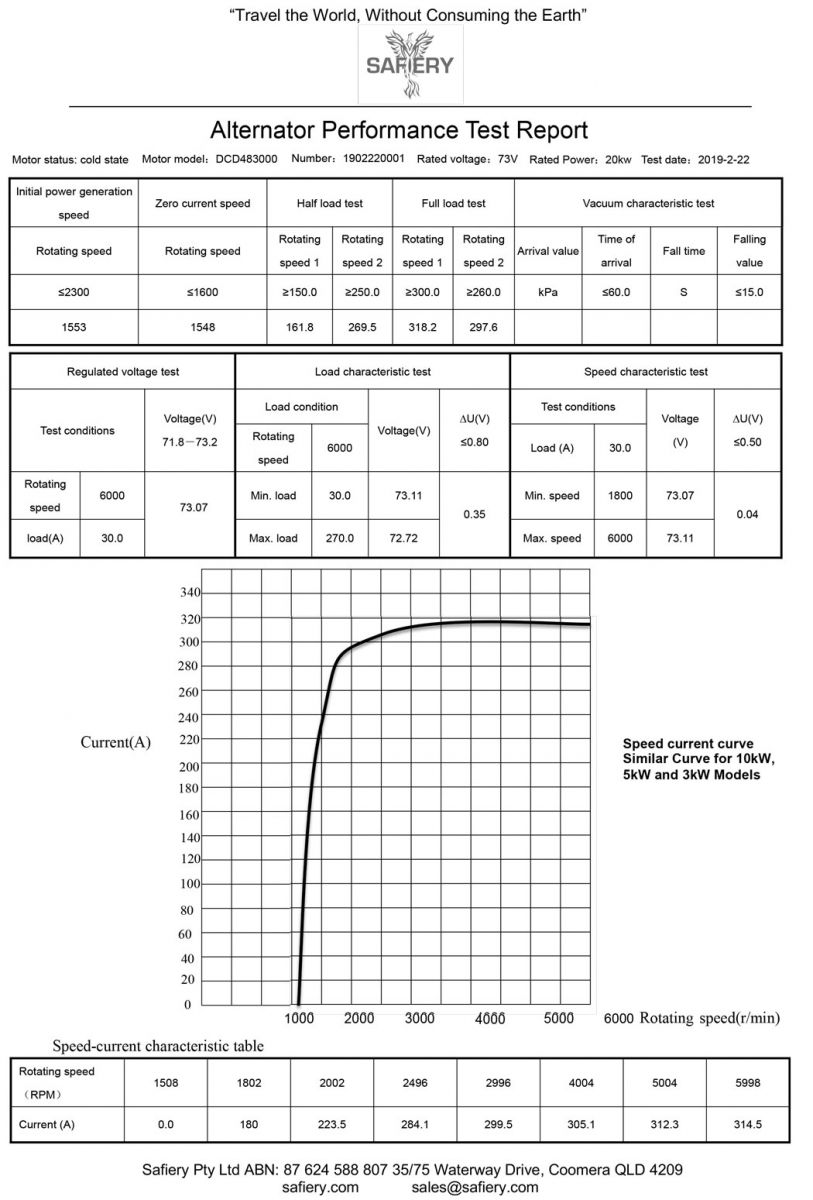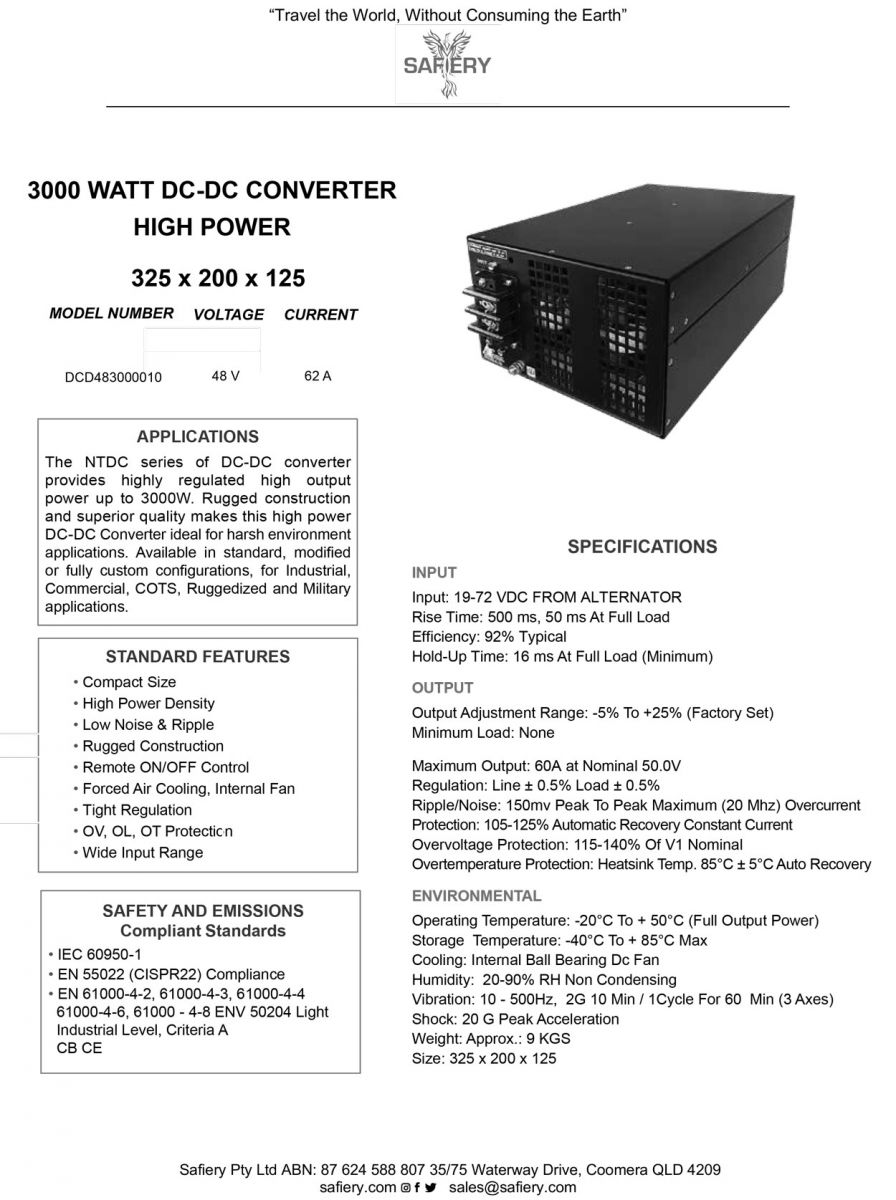
SAFIERY UNIVERSITY
REPLENISHMENT POWER
FROM ENGINE ALTERNATOR
BACKUP FOR SOLAR ON POOR DAY
This article is designed to give choices available to the reader from engine power using either the vehicle supplied alternator or adding a second high power alternator.
 PRIMARY POWER WHEN TOURING
PRIMARY POWER WHEN TOURING
After camping overnight and driving till midday to next campsite, the on-engine alternator will be a primary source of power. The energy delivered is measured in a 3 hour drive with and without solar production.
BACKUP POWER WHEN CAMPING
After finding the perfect campsite, the on-engine alternator will be a backup source of power. In poor weather, or if touring southern Victoria or tasmania, back-up power is essential. The energy delivered is measured at an idle of 500 rpm for 1 hour with and without solar production.
|
Power Size |
840W |
1300W |
3000W |
9000W |
|
Method |
Using DC to DC from existing Alternator |
Using DC to DC from existing Alternator |
Separate 48Vdc Alternator plus smart rectifier with power output at charging profile |
Separate 48Vdc Alternator plus smart rectifier with power output at charging profile |
|
|
Alternator must be able to deliver 35A @ 24V |
Alternator must be able to deliver 70A @ 24V |
Alternator is 3kw or 5kW |
|
|
Dependency |
Power curve of existing alternator |
Power curve of existing alternator |
Power curve of alternator shown |
|
|
Power output at 1200 rpm |
840W |
1300W |
2600W |
5200W |
|
Touring: Power delivered typically in 3 hours driving Typical Daily use no air-con is 3500wh |
1800Wh |
3500Wh |
7500Wh |
> 12000Wh |
|
Backup Power: Poor Solar Weather vehicle engine running at idle (600RPM) for 1 hour Typical Daily use no air-con is 3500wh |
300Wh |
800Wh |
1500Wh |
3500Wh |
|
Price Excludes GST Subject to Change |
$661 |
$1,890 |
$4,000 |
$15,300 |
|
|
|
|
Includes Bracket, dampener and belt |
Includes Bracket, dampener and belt |


